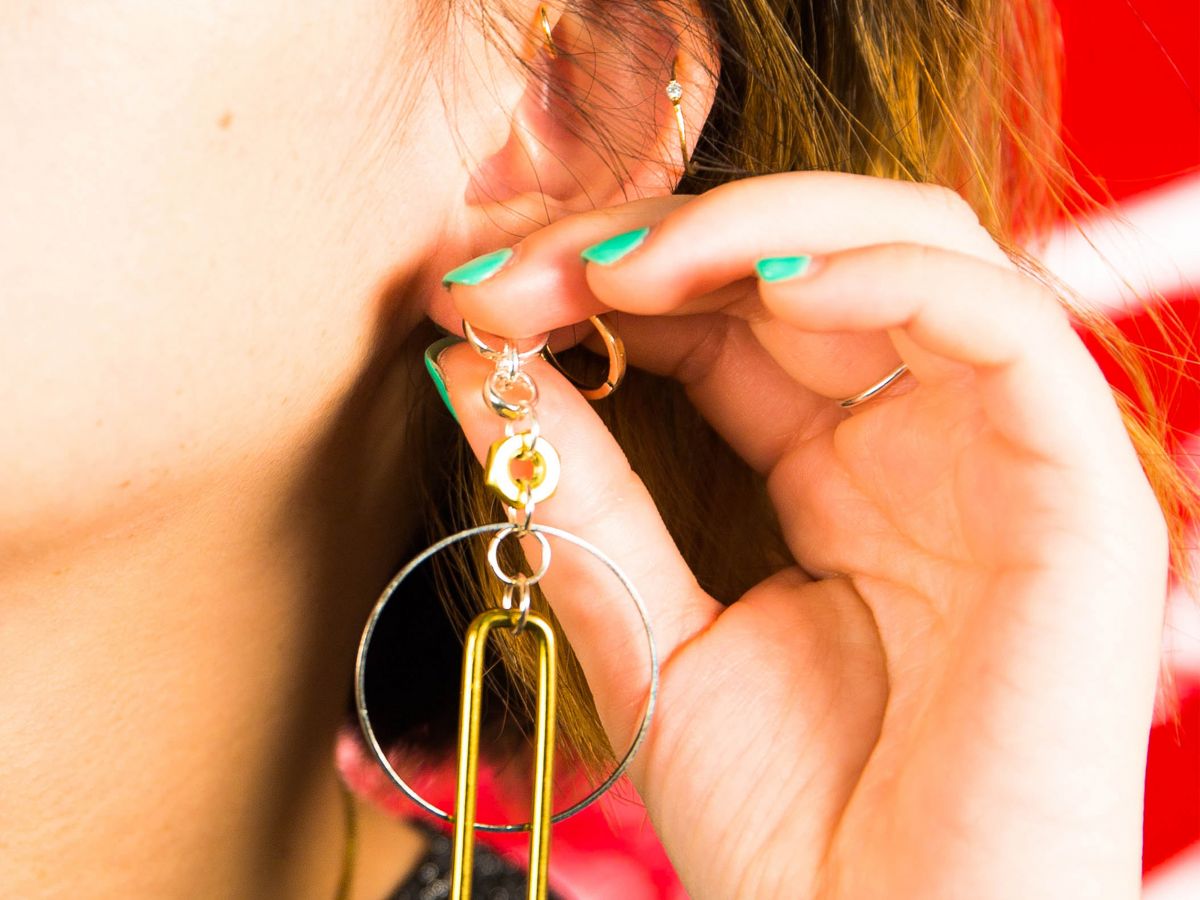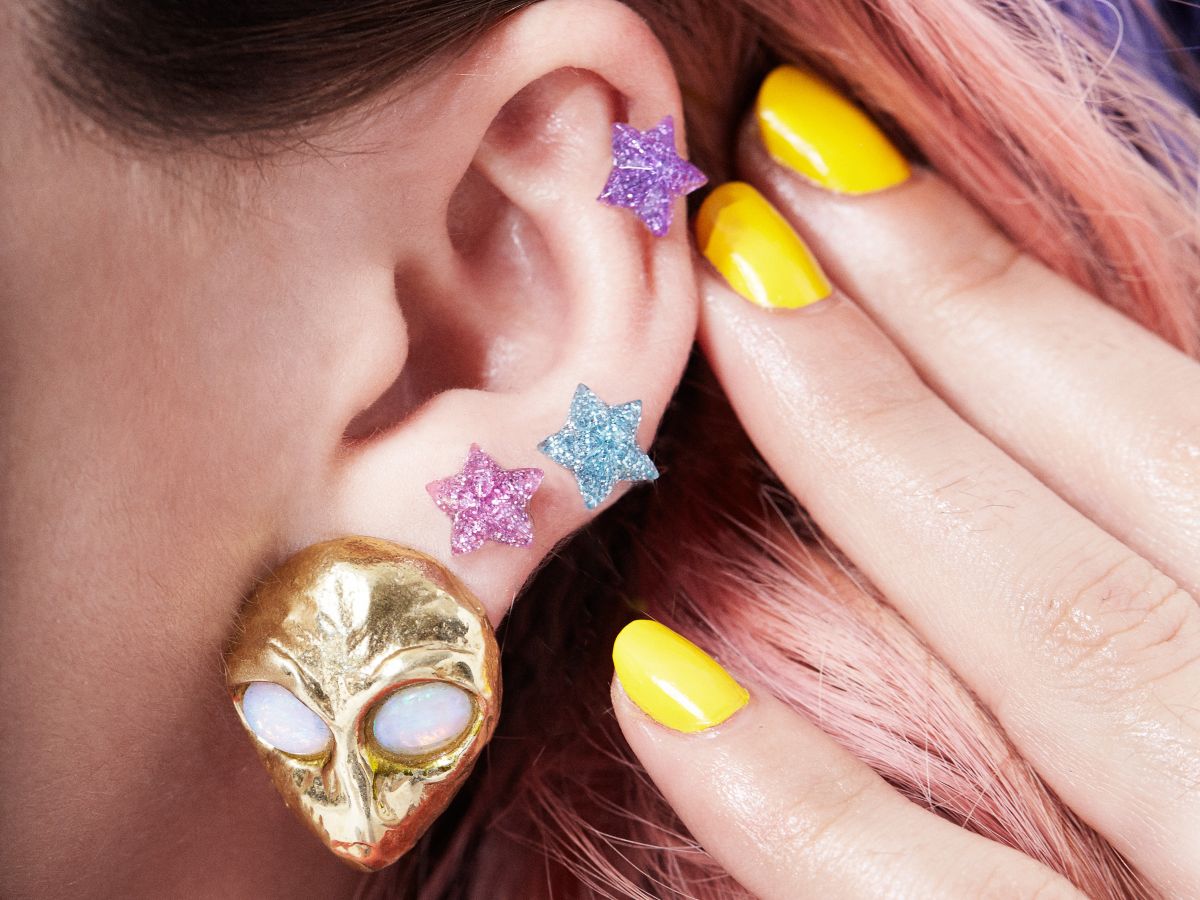This article was last updated on April 16, 2022
Canada: ![]() Oye! Times readers Get FREE $30 to spend on Amazon, Walmart…
Oye! Times readers Get FREE $30 to spend on Amazon, Walmart…
USA: ![]() Oye! Times readers Get FREE $30 to spend on Amazon, Walmart…
Oye! Times readers Get FREE $30 to spend on Amazon, Walmart…

Instagram can teach you a lot about piercing trends, from the daith to the nipple to the one you’d never tell your grandma about. But what you won’t learn on social media are the nitty-gritty details — like the healing process — that follow. In one scroll you might notice that rook piercings are the new It spot, but what happens if it migrates, you’re allergic to your new barbell, or it gets infected? But better yet, how do you know if it’s infected in the first place?
We asked L.A.’s most in-demand piercer, Brian Keith Thompson (whose client list includes Beyoncé and FKA Twigs) and Patricia Wexler, MD, New York-based dermatologist, to answer the top questions surrounding infections, migrated jewelry, and more. Keep scrolling for some of our top FAQs.
Let’s start with the big question: How can you tell if your piercing is infected?
According to Thompson, the telltale signs of an infection are simple: “The area around the piercing is warm to the touch, you notice extreme redness or red streaks protruding from it, and it has discolored pus, normally with a green or brown tint,” Thompson says. “You might also notice swollen lymph nodes, which is your body trying to kill the infection.” If your piercing is severely infected, you’ll basically feel like you’re getting a cold, and, in some cases, you might even begin to run a fever.
Dr. Wexler agrees that it’s easy to identify an infection by the above symptoms, adding that you might also experience some swelling, pain, tenderness of the area, burning, or itching. “This usually occurs more than two days after the piercing and continues to worsen,” she explains. See a medical professional to address the situation ASAP if this sounds like what you’re dealing with.
When it comes to pus, what’s normal and what’s an infection?
“ When it’s discolored, like green or brown, that’s serious and something to be addressed immediately by a medical professional,” Thompson says “This could likely be an infection that shouldn’t go untreated.” Dr. Wexler agrees: If it’s yellow or green around the opening, call your doctor. (White fluid or crust, on the other hand, is normal, but more on that later.)
Are infected piercings common?
“Most of the time what a person thinks is an infection is really just a pissed off piercing,” Thompson says. Dr. Wexler mentions that your piercing (especially ears) will most likely be sensitive for several days — and that’s totally normal. So, don’t overreact until you spot the aforementioned symptoms.
How do you treat an infected piercing?
If the piercing is infected, don’t panic — just get to the doctor. Your next plan of action is treatment: “A minor infection can usually be treated at home by cleaning around the piercing with the saltwater solution three times daily and a topical antibiotic ointment,” Dr. Wexler explains. But she warns to look out for crust forming around the inflamed piercing hole — it can trap bacteria and close the hole. She suggests cleaning the front and back of the piercing and drying with a lint-free sterile gauze or paper towel.
How can you avoid an infected piercing?
Most importantly, listen to the after-care tips from your piercer. Try not to touch your new piercing — and if you must, wash your hands thoroughly before doing so. Thompson adds that you should wash your piercing at least once a day — twice a day if you’re active in your daily routine, like you work around children or outdoors. His soap of choice: Dr. Bronner’s Castile Soap. But any mild soap works, too!

Photographed by Christine Hahn; styled by Courtney Raniszewksi at Apostrophe
When is the best time to remove a piercing in the case of an infection?
“In the presence of a minor infection, the jewelry should not be removed or the hole will close and lose the piercing,” Dr. Wexler says. “Earring holes, specifically, can take a minimum of eight weeks to granulate and removing the earring will destroy any chance you have of keeping that piercing.”
My piercing is red, irritated, and a little swollen, but it doesn’t seem infected — what could this mean?
“A lot of times people will come in thinking they have an infection when it’s really just physical irritation,” Thompson explains. They’re likely hitting it a lot or playing with it — both no-no’s. Cartilage piercings experience this often because it’s in the line of fire for everyday activities. This can cause redness, swelling, and a little bit of pain. You might even see some white or clear fluid from the piercing — this is lymph fluid, not pus. Dr. Wexler adds that this is normal and may be noticeable for several days after your piercing. If it persists past a few days it’s good to rule out an allergy to the jewelry.
Can I be allergic to my piercing?
Cheap jewelry often contains allergens like nickel, but titanium, gold, and platinum are better bets because they’re hypoallergenic. If this is the case, then think about having the jewelry changed ASAP. Dr. Wexler says that after swapping out the jewelry, consider seeing your doctor to make sure it’s healing correctly, because you might need to treat the irritation topically with steroids.
I’ve heard that your body can reject a piercing — what does that mean?
A rejection happens when your body’s immune system tries to remove the piercing for you. This happens most often to nipple and naval piercings. It’s just like it sounds: The body slowly pushes the jewelry out.
What does a rejected piercing look like?
Rejected piercings aren’t as serious as infections, but could threaten the longevity of the piercing. It normally gets inflamed, then begins to move slowly out of the hole. Thompson explains that, in the case of nipple piercings, you’ll notice the skin between the barbells has protruding red streaks and starts getting shallow. You’ll see the same around the curved barbells in naval piercings.
Dr. Wexler says that this isn’t a life-threatening situation. “One rejected piercing has no relevance on future piercings,” she explains. “If the rejected piercing is due to infection, but caution is taken to prevent future infections, all future piercings should be uneventful.” She stresses that the most important thing to remember is to take care of your new piercing until it’s fully healed. Be meticulous, keep it clean, and make sure the jewelry is sterilized before use.
What should you do if your piercing is rejected?
Thompson suggests that if your body begins to reject your piercing, don’t wait for it to fully remove itself, or else you’ll have a pronounced scar from where the hole originally was. Call your piercer and have them look at it before this happens. They may change the jewelry, or remove it altogether. If this is the case, you can wait for it to heal, then try piercing it again.
How common is this?
It’s hard to say, because everyone’s bodies and immune systems are different and a lot of issues can impact this. What sensitivities do you have? How was your body pierced? What kind of jewelry is it? Did the piercer go through enough tissue? These are just some of the factors involved in a potential rejection.
Is a rejection different from a migrated piercing?
Yes, sometimes people will get a piercing and then they’ll notice it move just slightly. This is like a rejection, but it’s actually called a migration. “Say you get cartilage pierced and you’re constantly sleeping on it,” Thompson explains. “Your body will change the location of the jewelry to protect the body from trauma.” So, it might be at a different angle than when you initially got it pierced. Its movement depends on where you’re putting the pressure, but if the piercing is in an area not normally touched often, it wont’ be prone to migration.
What’s the one thing that everyone should know before getting a piercing?
Thompson stresses that piercings don’t heal overnight, some could even take up to six months — and that’s if you leave it alone and keep it clean. But don’t feel bad if you physically irritate it. Thompson and Dr. Wexler agree that accidents and sensitivity around the area is normal. But, most importantly, let it heal without messing with it. “Your piercer could do a perfect, textbook piercing, but if you don’t let it heal, it won’t heal,” Thompson concludes. Bottom line: It’s your responsibility to care for it.
Click HERE to read more.
You can publish this article on your website as long as you provide a link back to this page.

Be the first to comment